

Students often ask, “What happens if you make a hologram of a mirror?” Yuri Denisyuk’s first hologram was of a mirror, and this project explores the fascinating possibilities of simply adding a front surface mirror to the Big Beam holographer’s equipment list.
TRANSMISSION CASE:
The mirror reflects the portion of the spread laser beam that misses the plateholder to the holoplate, effectively generating a second point source to interfere with the direct beam.
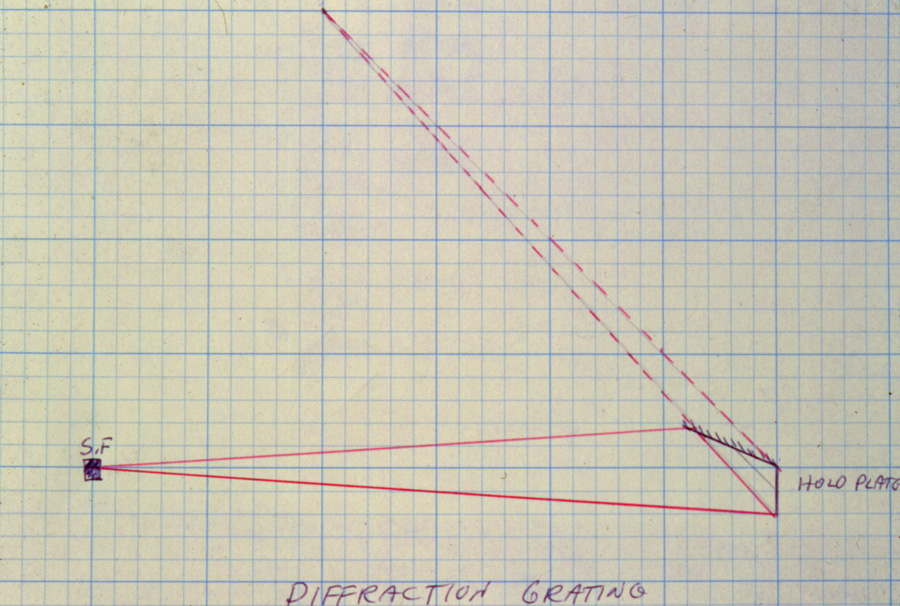
Here is this scheme fleshed out on the Big Beam, 8" X 10", 20 by 25 cm, using 7 mW of He-Ne power, circa 1985:
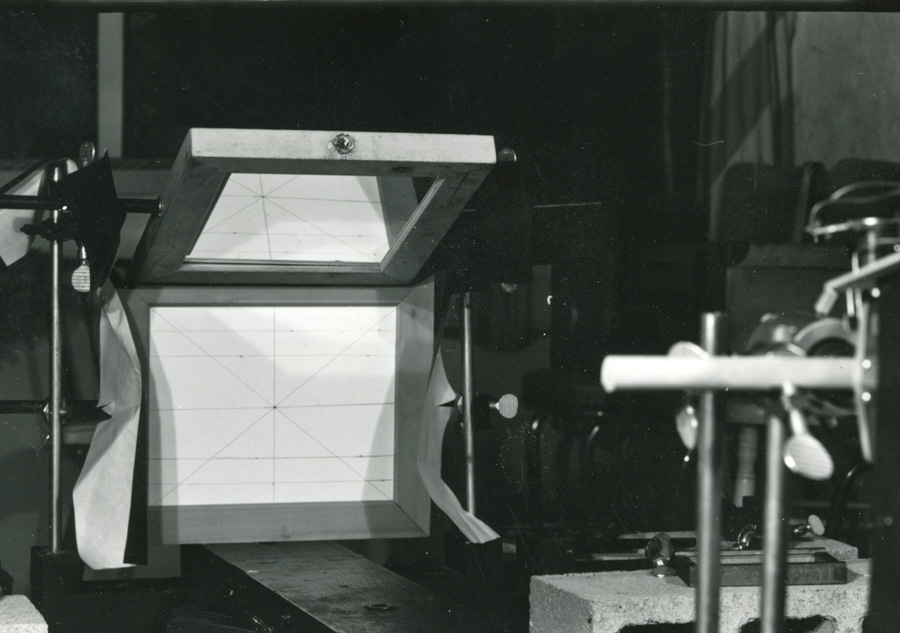
Notice the reflection of the target card in the plateholder in the overhead mirror, supported by a pair of "goalposts".
And here are a couple of interesting uses it was put to; #1, classroom viewing of a spectral lamp! (Don't ask me what kind of gas is in there! I'm waiting for a sharp-eyed spectroscopist to fill me in. And sorry, the film is a tad wrinkley.)
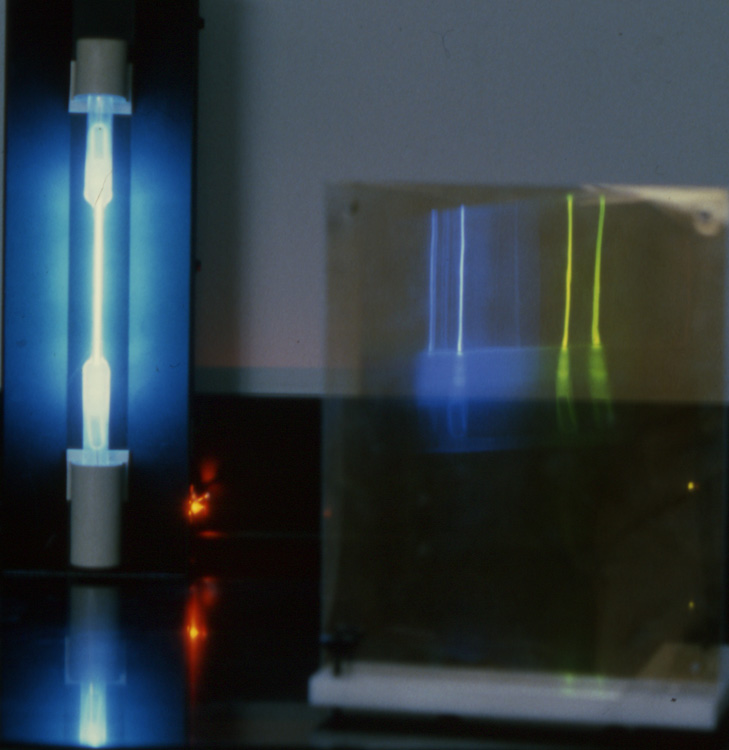
In a similar vein, take your grating and look at streetlights with it.
And here it is being used as a big reflecting spectroscope:

A pair of razor blades in a slide mount make a slit that is projected onto a stack of stuff. On the top, the red of a box of Kodak SO-253 High Speed Holographic film photographs strongly in the red when seen through the grating, the rest of the rainbow dims out; Kodak yellow reflects red and green quite well, as it should, and weakly in the blue.
A hard to see dark green China marking pencil (grease pencil) reflects almost no red or blue; a blue-bodied pen is good for blue but not green or red.
Agfa orange reflects strongly in the red, but not as strong in the green, that's why it's orange, not yellow, while a section of a box where the tape has ripped off all the outer pigment shows a continuous spectrum.
Here is how TJ describes making a similar grating on his steel plate on an inner tube system:
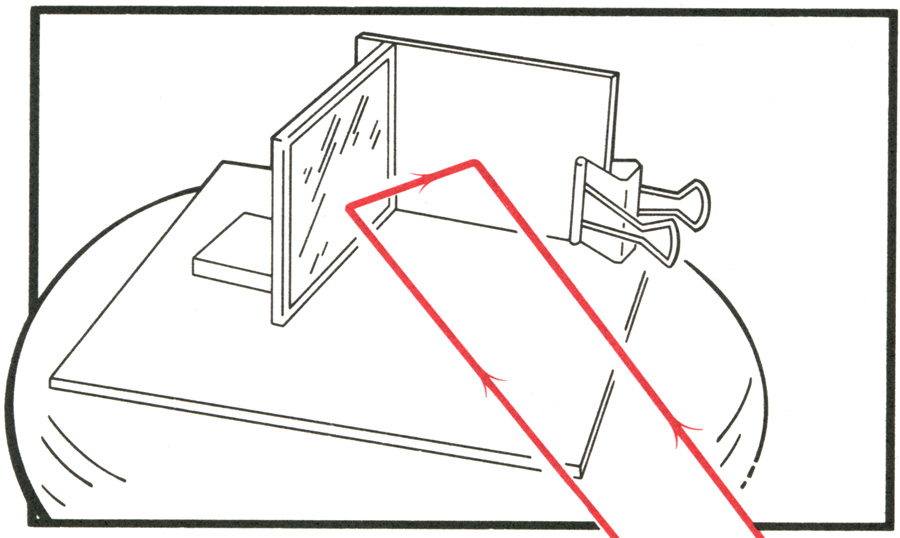
Here are some classroom handouts on how to make gratings:
From the Holo II class at Gallery 1134 (Not exactly a single beam set up.)
From the Beginning Holography class at the School of the Art Institute of Chicago
Although those gratings below were not made in a single beam style, here is more fun you can have with gratings: put them in your windows!

When the holographer is ready to make the big step to split beam work, there is no need to buy a beamsplitter, as you can use a grating made in this manner to be the beamsplitter! See this paper for details.
One can vary the angles between the mirror and the holo plate to get a wide variety of spatial frequencies (or inversely large fringe spacings); but to get extremely low spatial frequencies, two mirrors may be necessary. Why would anyone want to do that? Well, to look at your Christmas tree! Check this out.
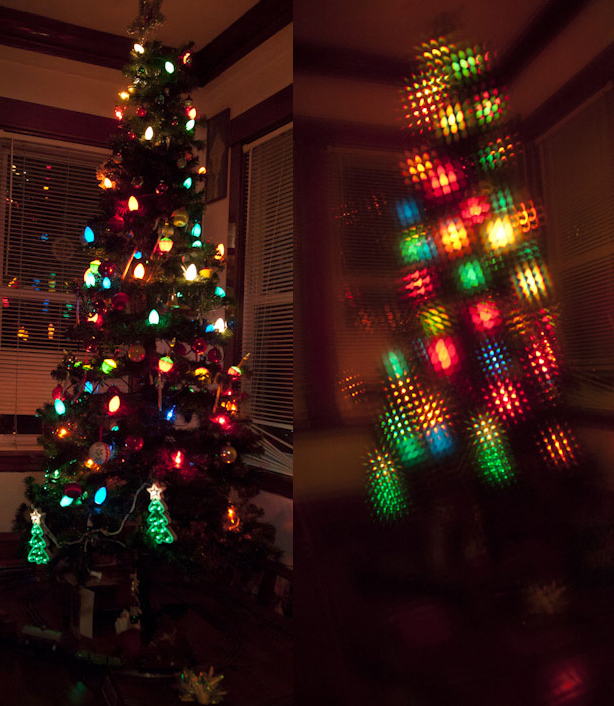
Here is an interesting use of a Single Beam Reflection set up of a mirror to evaluate holographic recording materials.
<back BONUS PROJECT 1: Diffraction Gratings next>
<Introduction> <Equipment> <The Big Beam> <Project 1a: In-line "Gabor" type Holograms> < Project 1b: Off-Axis Holograms> < Project 2: Single Beam Transmission Deep Scene Hologram> <Project 3: Division of Amplitude Hologram> <Project 4: Pseudo-Achromat Transfer Hologram> <Project 5: Cylindrical Hologram> <Project 6: Single Beam Reflection Hologram> <Project 7: Image Plane Reflection Hologram> <Bonus Project 1: Diffraction Gratings> <Bonus Project 2: Holoroids>